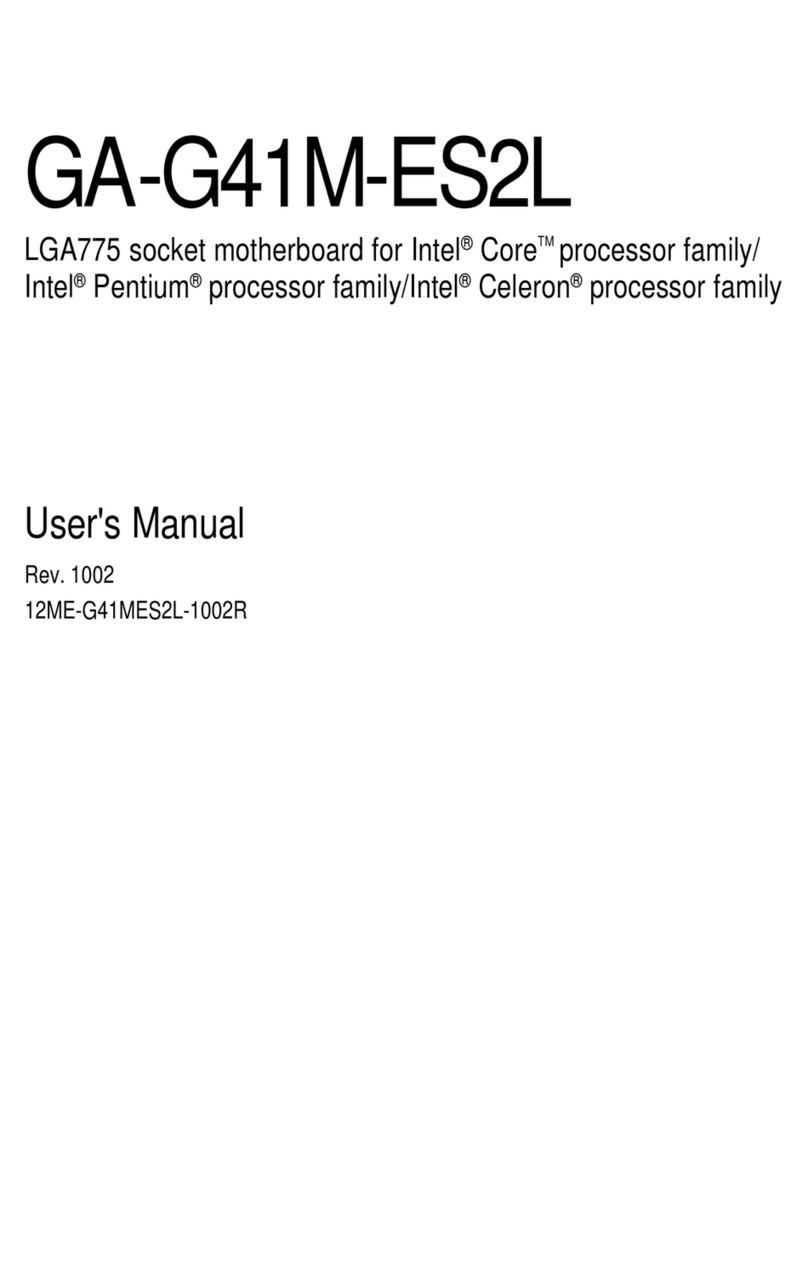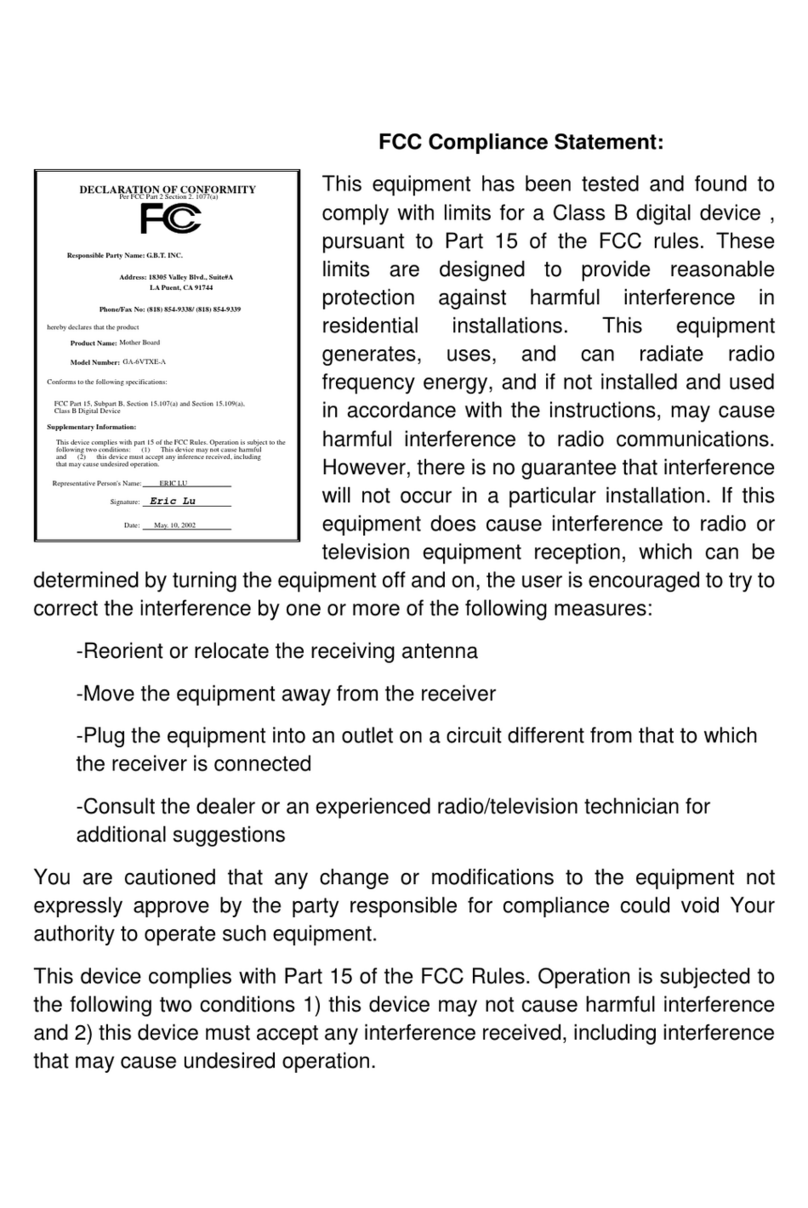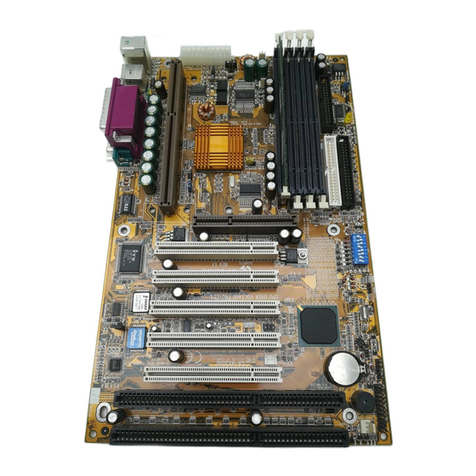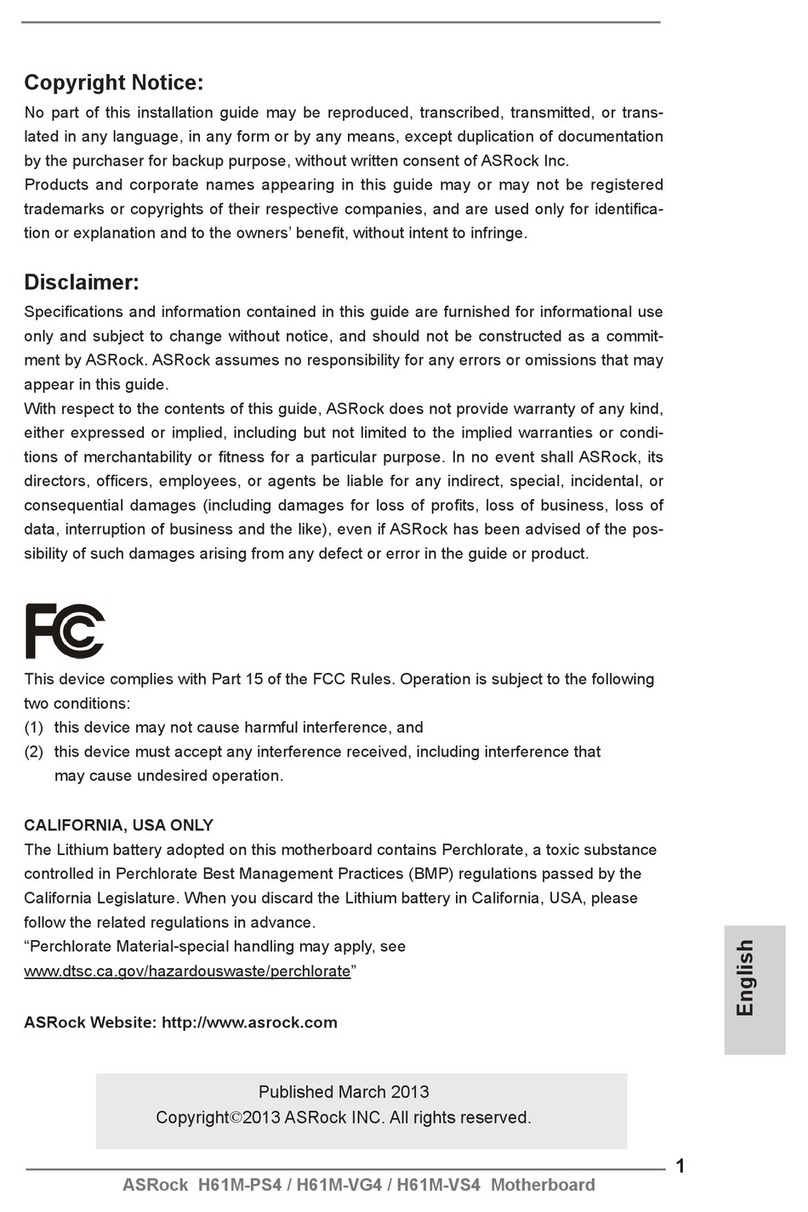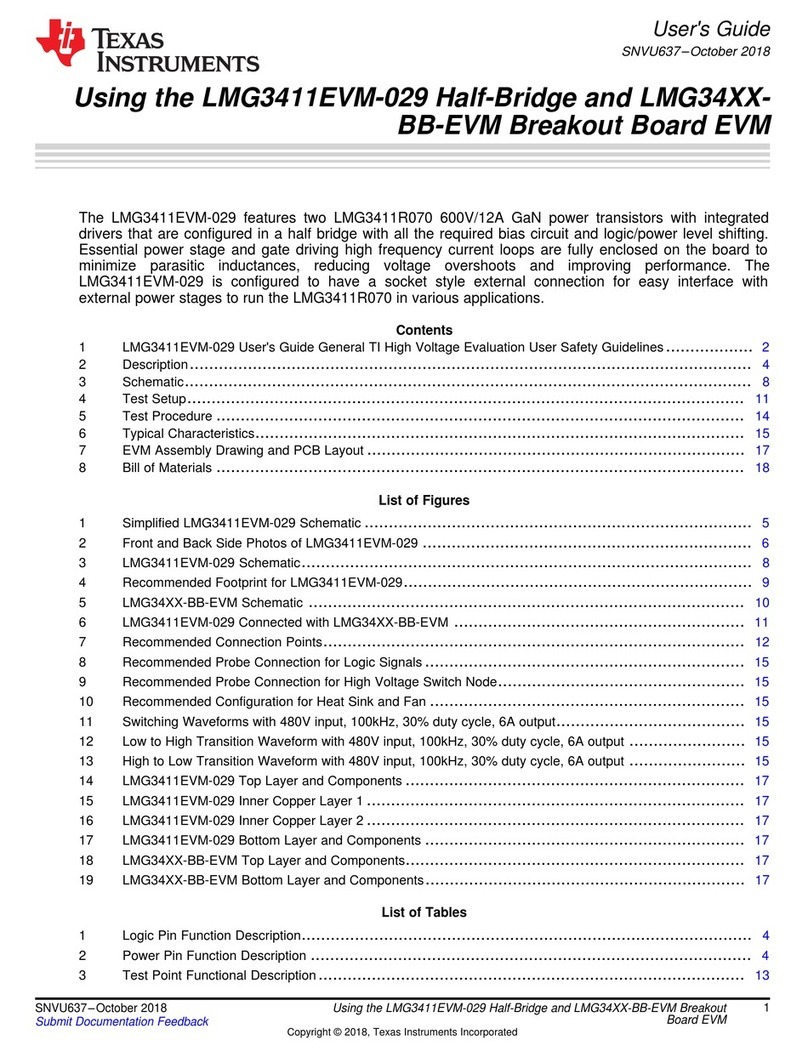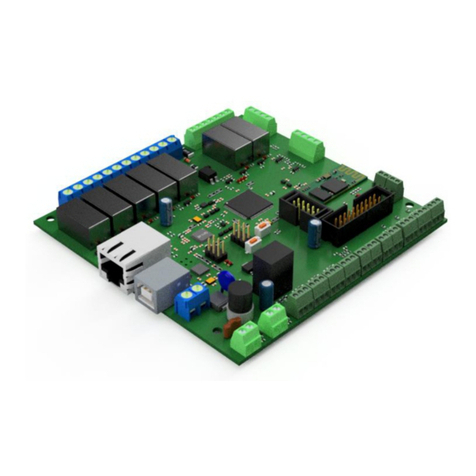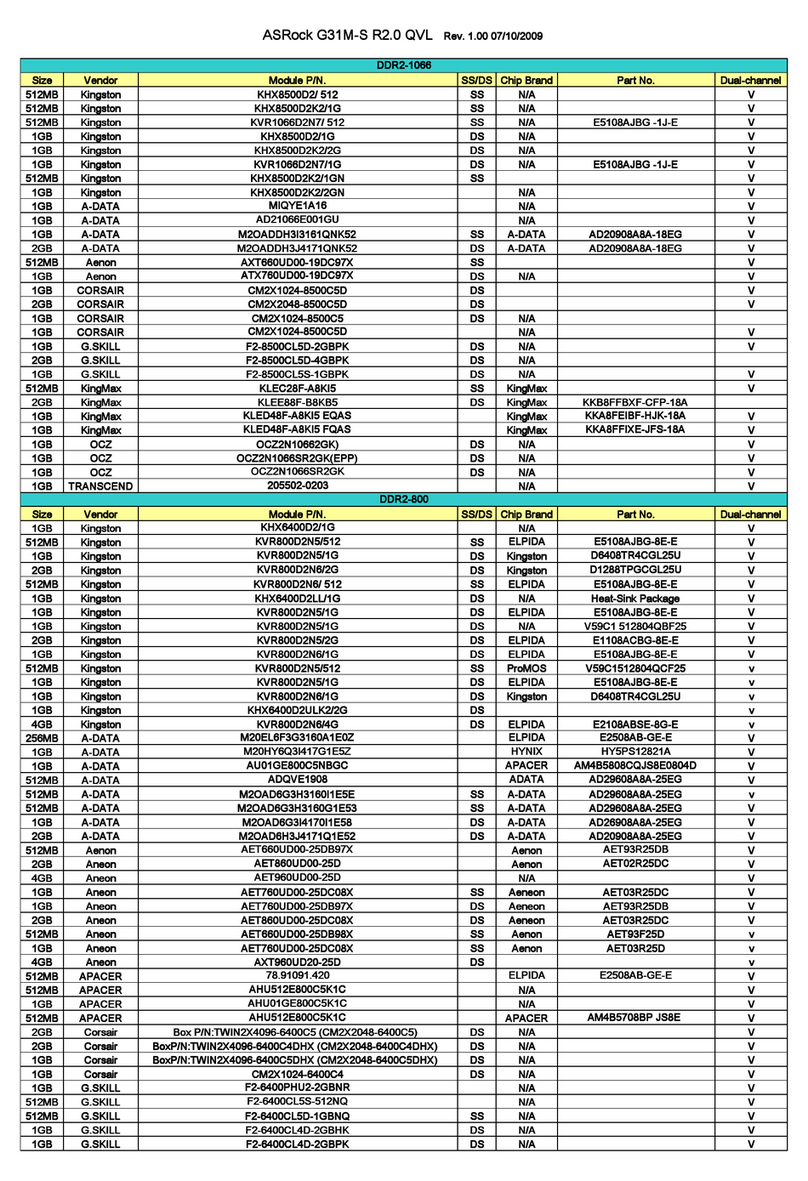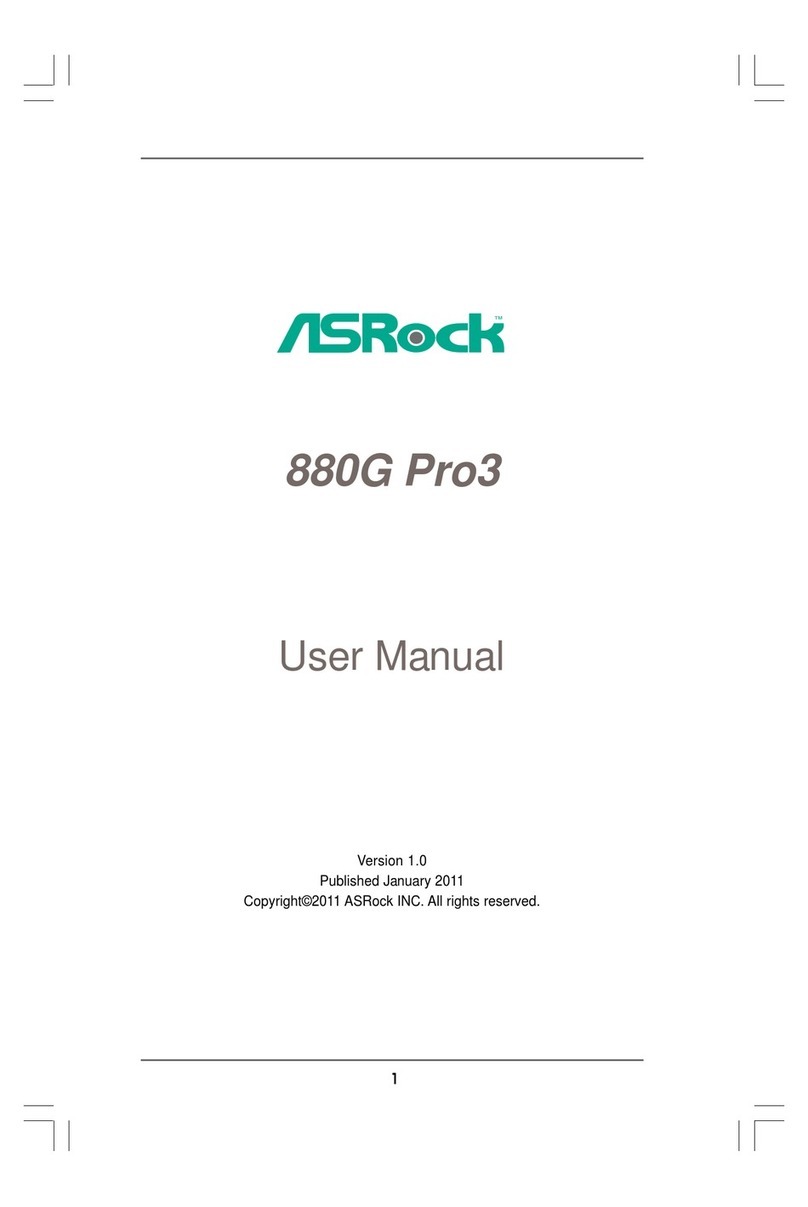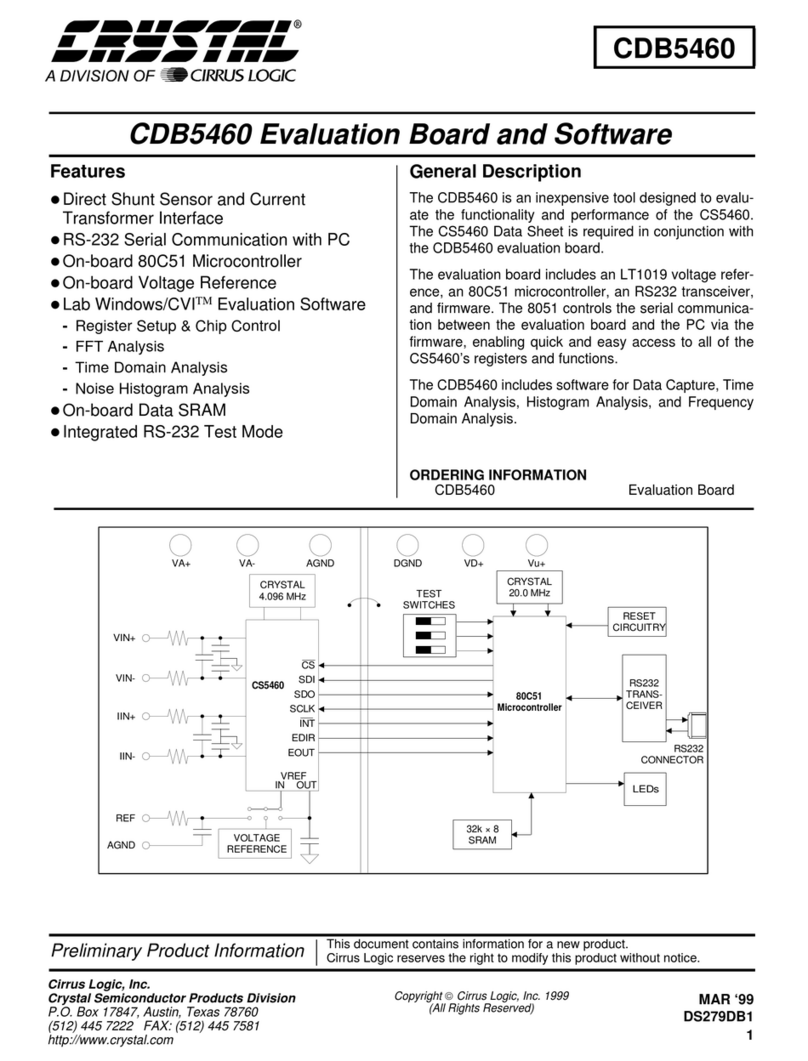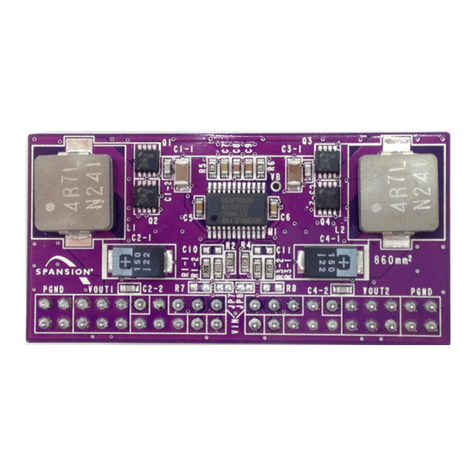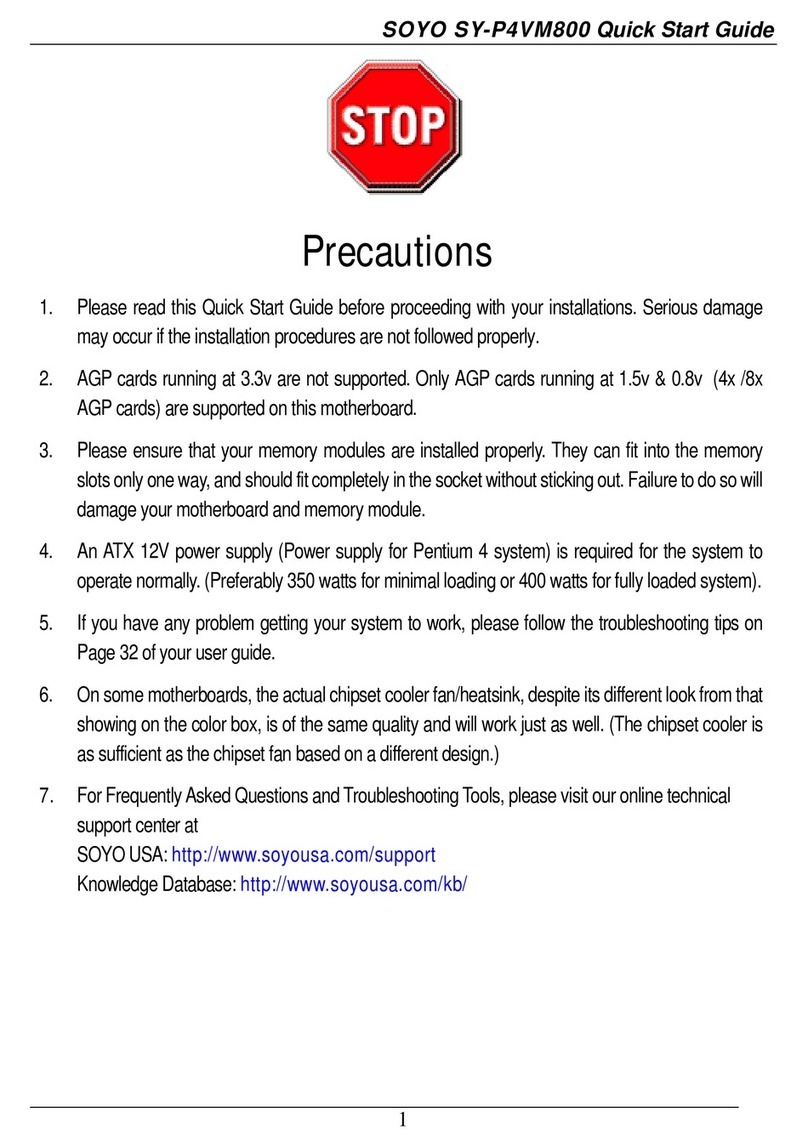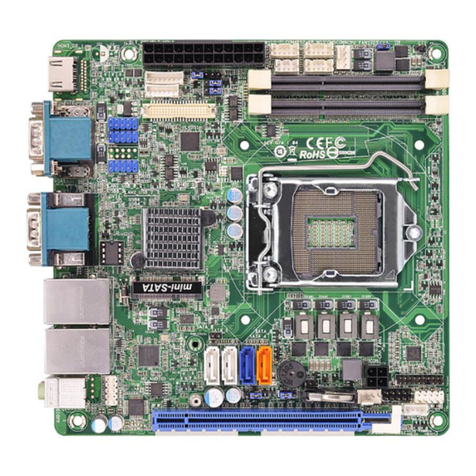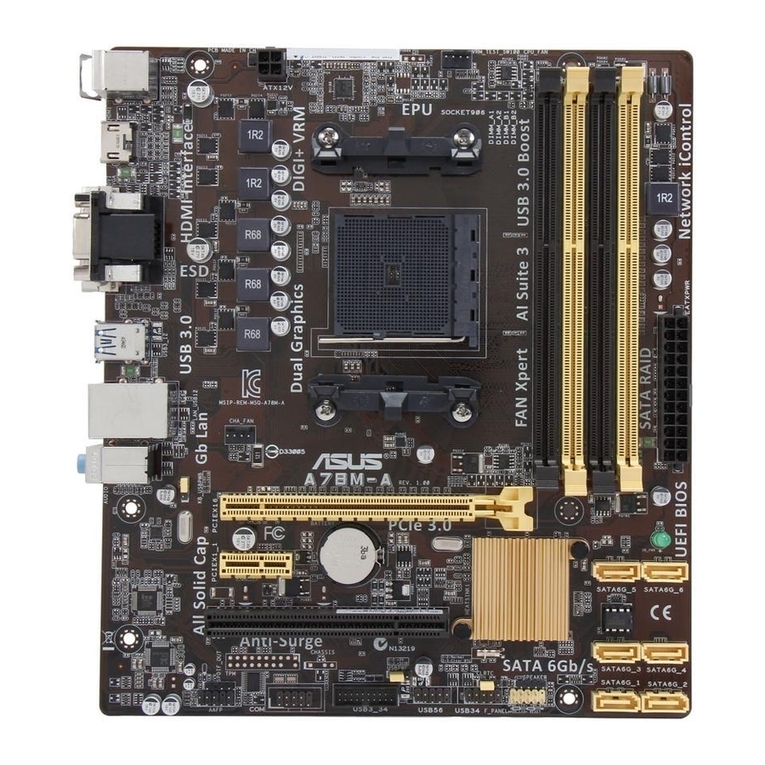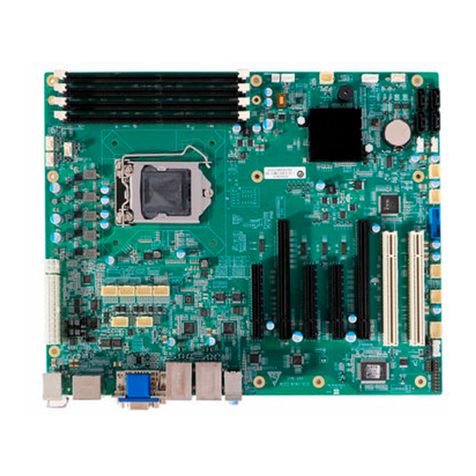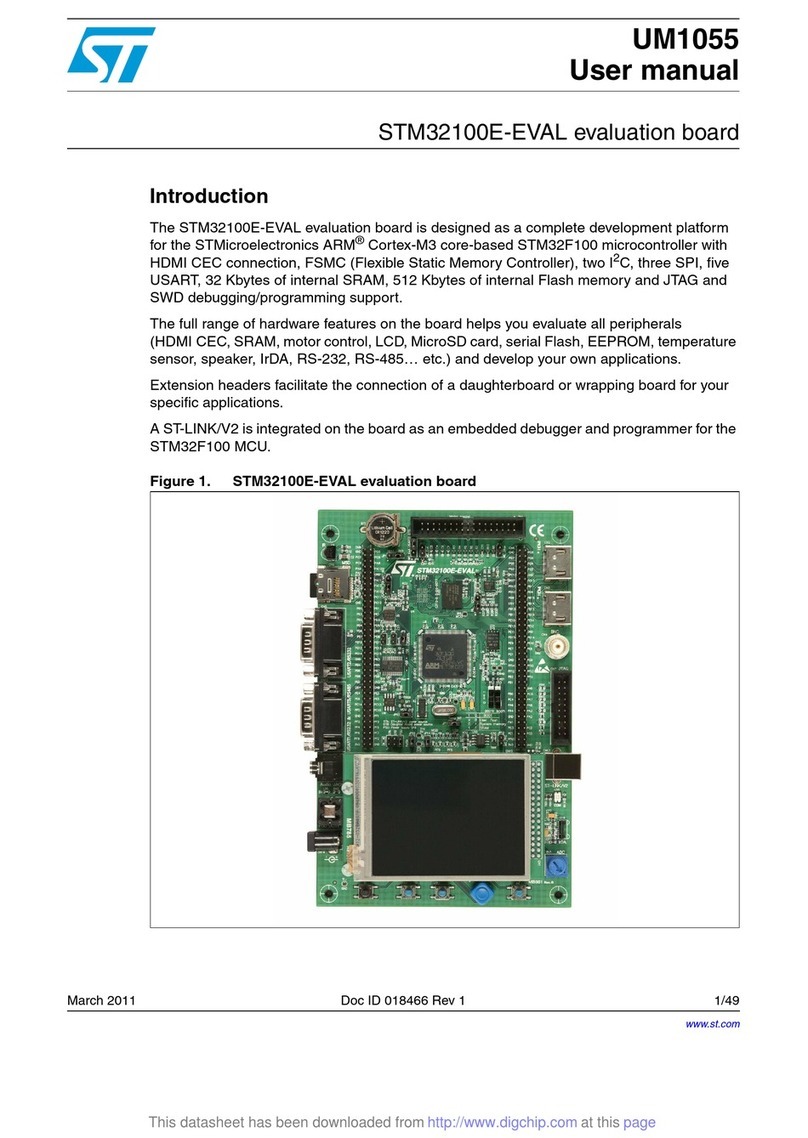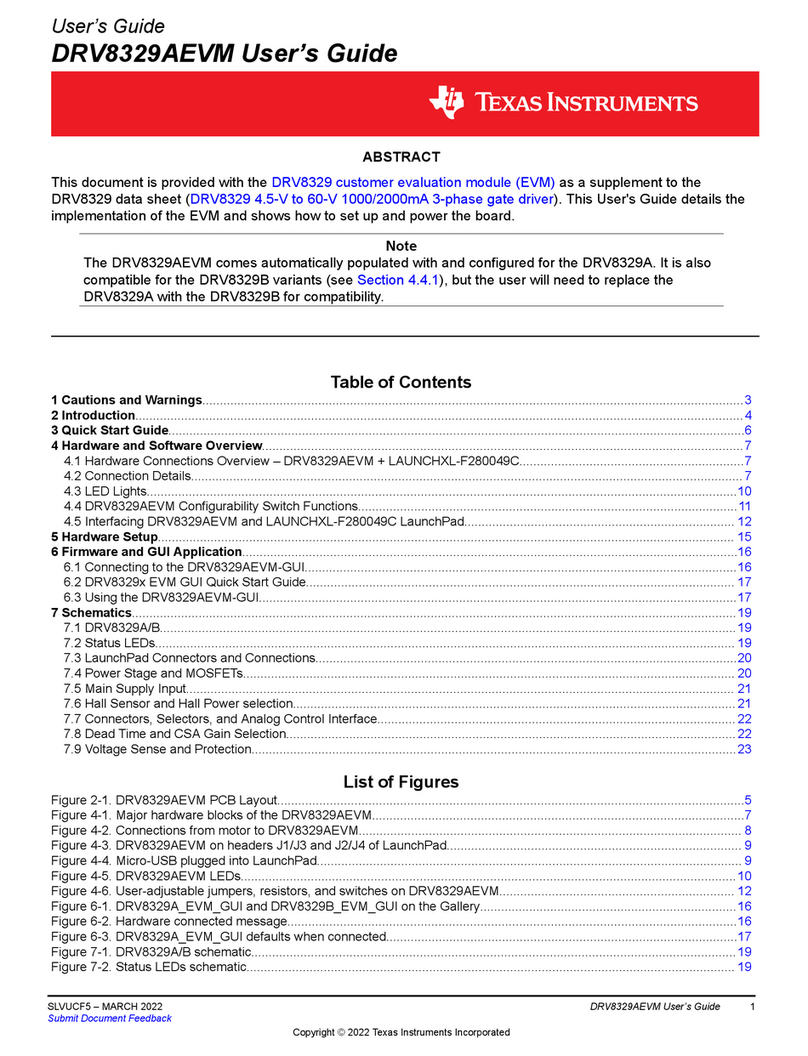G.B.T GA-7VTX-P User manual

FCCComplianceStatement:
This equipment has been tested and found to
comply with limits for a Class B digital device ,
pursuant to Part 15 of the FCC rules. These
limits are designed to provide reasonable
protection against harmful interference in
residential installations. This equipment
generates, uses, and can radiate radio
frequency energy, and if not installed and used
in accordance with the instructions, may cause
harmful interference to radio communications.
However, there is no guarantee that interference
will not occur in a particular installation. If this
equipment does cause interference to radio or
television equipment reception, which can be
determined by turning the equipment off and on, the user is encouraged to try to
correct the interference by one or more of the following measures:
-Reorient or relocate the receiving antenna
-Move the equipment away from the receiver
-Plug the equipment into an outlet on a circuit different from that to which
the receiver is connected
-Consult the dealer or an experienced radio/television technician for
additional suggestions
You are cautioned that any change or modifications to the equipment not
expressly approve by the party responsible for compliance could void Your
authority to operate such equipment.
This device complies with Part 15 of the FCC Rules. Operation is subjected to
the following two conditions 1) this device may not cause harmful interference
and 2) this device must accept any interference received, including interference
that may cause undesired operation.
DECLARATION OF CONFORMITY
Per FCC Part 2 Section 2. 1077(a)
Responsible Party Name: G.B.T. INC.
Address: 18305 Valley Blvd., Suite#A
LA Puent, CA 91744
Phone/Fax No: (818) 854-9338/ (818) 854-9339
hereby declares that the product
Product Name:
Model Number:
Mother Board
Conforms to the following specifications:
FCC Part 15, Subpart B, Section 15.107(a) and Section 15.109(a),
Class B Digital Device
Su
pp
lementar
y
Information:
This device complies with part 15 of the FCC Rules. Operation is subject to the
following two conditions: (1) This device may not cause harmful
and (2) this device must accept any inference received, including
that may cause undesired operation.
Representative Person's Name: ERIC LU
Signature:
Date: Sep. 26, 2001
Eric Lu
GA-7VTX-P

Declaration of Conformity
We, Manufacturer/Importer
(full address)
G.B.T. Technology Träding GMbH
Ausschlager Weg 41, 1F, 20537 Hamburg, Germany
declare that the product
( description of the apparatus, system, installation to which it refers)
Mother Board
GA-7VTX-P
is in conformity with
(reference to the specification under which conformity is declared)
in accordance with 89/336 EEC-EMC Directive
EN 55011 Limits and methods of measurement EN 61000-3-2* Disturbances in supply systems caused
of radio disturbance characteristics of EN60555-2 by household appliances and similar
industrial, scientific and medical (ISM electrical equipment “Harmonics”
high frequency equipment
EN55013 Limits and methods of measurement EN61000-3-3* Disturbances in supply systems caused
of radio disturbance characteristics of EN60555-3 by household appliances and similar
broadcast receivers and associated electrical equipment “Voltage fluctuations”
equipment
EN 55014 Limits and methods of measurement EN 50081-1 Generic emission standard Part 1:
of radio disturbance characteristics of Residual, commercial and light industry
household electrical appliances,
portable tools and similar electrical EN 50082-1 Generic immunity standard Part 1:
apparatus Residual, commercial and light industry
EN 55015 Limits and methods of measurement EN 55081-2 Generic emission standard Part 2:
of radio disturbance characteristics of Industrial environment
fluorescent lamps and luminaries
EN 55020 Immunity from radio interference of EN 55082-2 Generic immunity standard Part 2:
broadcast receivers and associated Industrial environment
equipment
EN 55022 Limits and methods of measurement ENV 55104 Immunity requirements for household
of radio disturbance characteristics of appliances tools and similar apparatus
information technology equipment
DIN VDE 0855 Cabled distribution systems; Equipment EN 50091- 2 EMC requirements for uninterruptible
part 10 for receiving and/or distribution from power systems (UPS)
part 12 sound and television signals
CE marking (EC conformity marking)
The manufacturer also declares the conformity of above mentioned product
with the actual required safety standards in accordance with LVD 73/23 EEC
EN 60065 Safety requirements for mains operated EN 60950 Safety for information technology equipment
electronic and related apparatus for including electrical business equipment
household and similar general use
EN 60335 Safety of household and similar EN 50091-1 General and Safety requirements for
electrical appliances uninterruptible power systems (UPS)
Manufacturer/Importer
Signature : Rex Lin
(Stamp) Date : Sep. 26, 2001 Name : Rex Lin

7VTX-P
AMD AthlonTM/DuronTM Socket A Processor
Motherboard
USER'S MANUAL
AMDAthlonTM/DuronTM Socket AProcessor Motherboard
REV. 1.0 First Edition
12ME-7VTXP-1001


How This Manual Is Organized
This manual is divided into the following sections:
1) Revision History Manual revision information
2) Item Checklist Product item list
3) Features Product information & specification
4) Installation Guide Instructions on setting up the motherboard
5) Block Diagram Product block diagram
6) Suspend to RAM & Dual BIOS Instructions on STR & Dual BIOS
installation
7) Four Speaker & SPDIF Four Speaker & SPDIF introduction
8) @BIOS™& EasyTuneIII™@BIOS™& EasyTuneIII™introduction
9) BIOS Setup Instructions on setting up the BIOS
software
10) Technical Support/RMA Sheet Document equipment used for after sales
service
11) Appendix General reference


Table Of Content
Revision History P.1
Item Checklist P.2
Summary of Features P.3
7VTX-P Motherboard Layout P.5
Installation Guide P. 6
Page Index for CPU Speed Setup / Connectors / Panel and Jumper
Definition P.14
Block Diagram P.38
Suspend to RAM Installation P.39
Dual BIOS Introduction P.45
Four Speaker & SPDIF Introduction P.52
@BIOSTM Introduction P.58
EasyTuneIIITM Introduction P.59
Page Index for BIOS Setup P.60
Technical Support / RMASheet P.87
Appendix P.88

7VTX-P Motherboard
1
Revision History
Revision Revision Note Date
1.0 Initial release of the 7VTX-Pmotherboard user’s
manual. Sep. 2001
The author assumes no responsibility for any errors or omissions that may appear in this
document nor does the author make a commitment to update the information contained herein.
Third-party brands and names are the property of their respective owners.
Please do not remove any labels on motherboard, this may void the warranty of this
motherboard.
Sep. 24, 2001 Taipei, Taiwan, R.O.C

Item Checklist
2
Item Checklist
The 7VTX-P motherboard
Cable for IDE / floppy device
Diskettes or CD for motherboard driver & utility
7VTX-Puser’s manual

7VTX-P Motherboard
3
Summary Of Features
Form Factor 31.1 cm x 25.3 cmATX size form factor, 4 layers
PCB.
CPU AMDAthlonTM/DuronTM (K7) SocketAProcessor
128K L1 & 256K/64K L2 cache on die
Supports 500MHz ~ 1.2GHz+ and faster
Chipset VIAChipset consisting of:
KT266AMemory/AGP/PCI Controller(PAC)
VT8233 Integrated Peripheral Controller (PSIPC)
Clock Generator W255/W312/SOP48
105/110/115/133 MHz system bus speeds
Supports 100~170MHz
200/266 MHz FSB and DDR bus speeds (PCI 33MHz)
Memory 3 184-pin DDR sockets.
Support DDR DRAM PC200/266
Supports up to 3 GB DDR
Supports only 2.5V DDR DIMM
I/O Control IT8705
Slots 1 AGP Pro slot supports 4X mode &AGP 2.0 compliant
5 PCI slot supports 33MHz & PCI 2.2 compliant
1AMR(Audio Modem Riser) slot
On-Board IDE 2 IDE bus master (ATA100/ATA66)IDE ports for up to
4ATAPI devices
Supports PIO mode 3, 4 (UDMA33/ATA66) IDE &
ATAPI CD-ROM
On-Board
Peripherals
1 floppy port supports 2 FDD with 360K, 720K,1.2M,
1.44M and 2.88M bytes
1 parallel ports supports SPP/EPP/ECP mode
2 serial ports (COMA& COM B)
6 USB ports
1 IrDAconnector for Fast IrDA
On-Board Sound
Creative CT5880 sound
Line In/Line Out/Mic In/AUX In/CD In/TEL/Game Port
SPDIF and Four Speaker To be continued…

Summary of Features
4
Hardware Monitor CPU/System fan revolution detect
CPU/System temperature detect
System voltage detect (Vcore,VDD ,Vcc,+12V)
PS/2 Connector PS/2Keyboard interface and PS/2Mouse interface
BIOS LicensedAMI BIOS, 2M bit flash ROM
Support Dual BIOS
Additional Features Support Wake-On-LAN (WOL)/ Wake-On-Ring (WOR)
Support Internal / External Modem Ring On
Support PS/2, KB/Mouse Power On.
Includes 3 fan power connectors
Poly fuse for keyboard over-current protection
Support STR (Suspend-To-RAM) function
Support Mic in , Line in, Line out, Game port, Front
Audio,AUX IN, Telephony

7VTX-P Motherboard
5
7VTX-P Motherboard Layout
LED1
7VTX-P
PCI 1
PCI 2
VT8233
KT266A
COM B COMA
LPT
PS/2
Main
BIOS
PWR
FAN
AUX_IN
TELE
BAT1 SYS
FAN
FDD
IDE2
IDE1
CLK SW
F PANEL
RAM
_LED
WOL
SMB
KBMS_
ON
USB1
AMR
PCI 3
USB2
GUARDIAN
A
TX POWER
NB FAN
CPU_FAN
F Audio
AMR_EN1
USB3
FUSB
_ON
STR
_EN
AGP_OV
GAME & AUDIO
BZ1
PCI 4
PCI 5
DDR 1
DDR 2
DDR 3
AGP PRO
RUSB_ON
CD_IN
FMIC_EN
CT5880
RAM_OV
WOR
Backup
BIOS
A
GP_USB1
AMR_USB1
AMR_USB2
AGP_USB2
CI
BIOS
WP
CLR CMOS
BUZ EN
IR SCR
CK_RATIO Socket A
CPU
SIGMATE
9708
AMR_EN2
APG_12V
IT8705
S_IRQ

Installation Guide
6
Installation Guide
Getting Started
WARNING!
Computer motherboards and expansion cards contain very delicate Integrated
Circuit (IC) chips. To protect them against damage from static electricity, you
should follow some precautions whenever you work on your computer.
1. Unplug your computer when working on the inside.
2. Use a grounded wrist strap before handling computer components. If you do not have one,
touch both of your hands to a safely grounded object or to a metal object, such as the
power supply case.
3. Hold components by the edges and try not touch the IC chips, leads or connectors, or
other components.
4. Place components on a grounded antistatic pad or on the bag that came with the
components whenever the components are separated from the system.
5. Ensure that theATX power supply is switched off before you plug in or remove theATX
power connector on the motherboard.
Installing the motherboard to the chassis…
If the motherboard has mounting holes, but they don’t line up with the holes on the base and
there are no slots to attach the spacers, do not become alarmed you can still attach the spacers
to the mounting holes. Just cut the bottom portion of the spacers (the spacer may be a little hard
to cut off, so be careful of your hands). In this way you can still attach the motherboard to the
base without worrying about short circuits. Sometimes you may need to use the plastic springs
to isolate the screw from the motherboard PCB surface, because the circuit wire may be near by
the hole. Be careful, don’t let the screw contact any printed circuit write or parts on the PCB that
are near the fixing hole, otherwise it may damage the board or cause board malfunctioning.

7VTX-P Motherboard
7
To set up your computer, you must complete the following steps:
Step 1 - Set system jumpers
Step 2- Install the Central Processing Unit (CPU)
Step 3-Install memory modules
Step 4-Install expansion cards
Step 5-Connect ribbon cables, cabinet wires, and power supply
Step 6-Set up BIOS software
Step 7-Install supporting software tools
STEP 1
STEP 1
STEP 2 STEP 3
STEP 5
STEP 4
STEP 5
STEP 5

Installation Guide
8
CPU Speed Setup
The CPU frequency can be switched by adjusting CLK_SW.
(The frequency ratio depend on CPU).
CLK_SW Select the CPU Speed 100MHz -170MHz by below table.
Clock Frequency Table
CLK_SW O:ON / X:OFF
CPU AGP PCI 1 2 3 4 5
133.3 66.6 33.3 X X X X X
100 66.6 33.3 O X X X O
166.6 66.6 33.3 X O X X X
110 73.3 33.3 O X O X O
120 60 30 X O O X O
140 70 35 O O O X X
150 75 37.5 X X X O X
170 68 34 O X X O X
ON
100 MHz
5 4 3 2 1
ON
133 MHz
5 4 3 2 1
*We recommend you to setup yoursystem speed by your CPU type.
CK_RATIO: Frequency Override
Ratio 1 2 3 4 5
Auto X X X X O
5X O O X O X
5.5X X O X O X
6X O X X O X
6.5X X X X O X
7X O O O X X
7.5X X O O X X
8X O X O X X
8.5X X X O X X
9X O O X X X
9.5X X O X X X
10X O X X X X
10.5X X X X X X
11X O O O O X
11.5X X O O O X
12X O X O O X
>=12.5X X X O O X
ON
1 2 3 4 5
O:ON, X:OFF
*We recommend you to setup yoursystem speed by Auto.

7VTX-P Motherboard
9
CPU Installation
Please make sure the CPU should be supported to the motherboard.
CPU Top View
CPU Bottom View
1.Pull the lever out and lift it up.
2.The notched corner should be orientated toward
the blank space on the socket nearest the lever. The
CPU will only fit in the orientation as shown.
CPU Heat Sink Installation:
Beware: Please check that the heat sink is in good contact with the CPU before you turn on your
system. The poor contact will cause over heat, and mightcause damage to your
processor!
Socket Actuation Leve
r
Blank

Installation Guide
10
3.Align CPU and insert it
(Please refer to your heatsink installation
manual for application of thermal grease to
provide better heat conduction between your
CPU and heatsink.)
4.Use compliant fan approved byAMD.
5.Hook one end of the cooler bracket to the CPU socket.
6. Hook the other end of the cooler bracket to the CPU socket.
(Please refer to the cooler’s installation manual for detailed installation steps)

7VTX-P Motherboard
11
Memory Installation
The motherboard has 3 dual DDR inline memory module (DIMM) sockets. The BIOS will
automatically detects memory type and size. To install the memory module, just push it vertically
into the DIMM Slot .The DIMM module can only fit in one direction due to the notch. Memory
size can vary between sockets.
Total Memory Sizes With Registered DDR DIMMS
Devices used on
DIMM 1 DIMM
x64/x72 2 DIMMs
x64/x72 3 DIMMs
64 Mbit
(4Mx4x4 banks) 256 MBytes 512 MBytes 768 MBytes
64 Mbit
(2Mx8x4 banks) 128 MBytes 256 MBytes 384 MBytes
64 Mbit
(1Mx16x4 banks) 64 MBytes 128 MBytes 192 MBytes
128 Mbit
(8Mx4x4 banks) 512 MBytes 1 GBytes 1.5 GBytes
128 Mbit
(4Mx8x4 banks) 256 MBytes 512 MBytes 768 MBytes
128 Mbit
(2Mx16x4 banks) 128 MBytes 256 MBytes 384 MBytes
256 Mbit
(16Mx4x4 banks) 1 GBytes 2 GBytes 3 GBytes
256 Mbit
(8Mx8x4 banks) 512 MBytes 1 GBytes 1.5 GBytes
256 Mbit
(4Mx16x4 banks) 256 MBytes 512 MBytes 768 MBytes
512 Mbit
(16Mx8x4 banks) 1 GBytes 2 GBytes 3 GBytes
512 Mbit
(8Mx16x4 banks) 512 MBytes 1 GBytes 1.5 GBytes

Installation Guide
12
Total Memory Sizes With Unbuffered DDR DIMMS
Devices used on
DIMM 1 DIMM
x64/x72 2 DIMMs
x64/x72 3 DIMMs
64 Mbit
(2Mx8x4 banks) 128 MBytes 256 MBytes 384 MBytes
64 Mbit
(1Mx16x4 banks) 64 MBytes 128 MBytes 192 MBytes
128 Mbit
(4Mx8x4 banks) 256 MBytes 512 MBytes 768 MBytes
128 Mbit
(2Mx16x4 banks) 128 MBytes 256 MBytes 384 MBytes
256 Mbit
(8Mx8x4 banks) 512 MBytes 1 GBytes 1.5 GBytes
256 Mbit
(4Mx16x4 banks) 256 MBytes 512 MBytes 768 MBytes
512 Mbit
(16Mx8x4 banks) 1 GBytes 2 GBytes 3 GBytes
512 Mbit
(8Mx16x4 banks) 512 MBytes 1 GBytes 1.5 GBytes

7VTX-P Motherboard
13
DDR
1. The DIMM slot has a notch, so the DIMM
memory module can only fit in one direction.
2. Insert the DIMM memory module vertically into
the DIMM slot. Then push it down.
3. Close the plastic clip at both edges of the
DIMM slots to lock the DIMM module.
Reverse the installation steps when you wish
to remove the DIMM module.
DDR Introduction
Established on the existing SDRAM industry infrastructure, DDR (Double Date Rate) memory is
a high performance and cost-effective solution that allows easy adoption for memory vendors,
OEMs and system integrators.
DDR memory is a sensible evolutionary solution for the PC industry that builds on the existing
SDRAM infrastructure, yet makes awesome advances in solving the system performance
bottleneck by doubling the memory bandwidth. DDR SDRAM will offer a superior solution and
migration path from existing SDRAM designs due to its availability, pricing and overall market
support. PC1600 DDR memory (DDR200) doubles the data rate through reading and writing at
both the rising and falling edge of the clock, achieving data bandwidth 2X greater than PC100
when running with the same DRAM clock frequency. With peak bandwidth of 1.6GB per second,
DDR memory enables system OEMs to build high performance and low latency DRAM
subsystems that are suitable for servers, workstations, high-end PC’s and value desktop SMA
systems. With a core voltage of only 2.5 Volts compared to conventional SDRAM's 3.3 volts,
DDR memory is a compelling solution for small form factor desktops and notebook applications.
Table of contents
Other G.B.T Motherboard manuals

